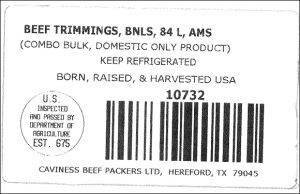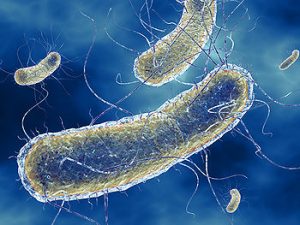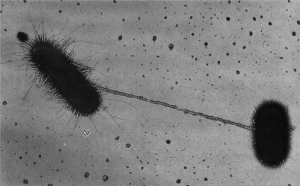The U.S. Centers for Disease Control worked with public health and regulatory officials in many states and the U.S. Food and Drug Administration (FDA) to investigate a multistate outbreak of Shiga toxin-producing Escherichia coli (STEC) infections.
 Sixty-three people infected with the outbreak strains of STEC O121 or STEC O26 were reported from 24 states. A list of the states and the number of cases in each can be found on the Case Count Map page. WGS showed that isolates from ill people were closely related genetically. This close genetic relationship means that people in this outbreak were more likely to share a common source of infection.
Sixty-three people infected with the outbreak strains of STEC O121 or STEC O26 were reported from 24 states. A list of the states and the number of cases in each can be found on the Case Count Map page. WGS showed that isolates from ill people were closely related genetically. This close genetic relationship means that people in this outbreak were more likely to share a common source of infection.
Illnesses started on dates ranging from December 21, 2015 to September 5, 2016. Ill people range in age from 1 year to 95, with a median age of 18. Seventy-six percent of ill people were female. Seventeen ill people were hospitalized. One person developed hemolytic uremic syndrome, a type of kidney failure, and no deaths were reported.
Epidemiologic, laboratory, and traceback evidence indicated that flour produced at a General Mills facility in Kansas City, Missouri was the likely source of this outbreak.
In interviews, ill people answered questions about the foods they ate and other exposures in the week before they became ill. Twenty-eight (76%) of 37 people reported that they or someone in their household used flour in the week before they became ill. Nineteen (50%) of 38 people reported eating or tasting raw homemade dough or batter. Twenty-one (57%) of 37 people reported using Gold Medal brand flour. Three ill people, all children, reported eating or playing with raw dough at restaurants.
In an epidemiologic investigation, investigators compared the responses of ill people in this outbreak to those of people of similar age and gender reported to state health departments with other gastrointestinal illnesses. Results from this investigation indicated an association between getting sick with STEC and someone in the household using Gold Medal brand flour.
Federal, state, and local regulatory officials performed traceback investigations using package information collected from ill people’s homes and records collected from restaurants where ill people were exposed to raw dough. These initial investigations indicated that the flour used by ill people or used in the restaurants was produced during the same week in November 2015 at the General Mills facility in Kansas City, Missouri, where Gold Medal brand flour is produced.
 On May 31, 2016, General Mills recalled several sizes and varieties of Gold Medal Flour, Gold Medal Wondra Flour, and Signature Kitchens Flour due to possible E. coli contamination. The recalled flours were produced in the Kansas City facility and sold nationwide.
On May 31, 2016, General Mills recalled several sizes and varieties of Gold Medal Flour, Gold Medal Wondra Flour, and Signature Kitchens Flour due to possible E. coli contamination. The recalled flours were produced in the Kansas City facility and sold nationwide.
In June 2016, laboratory testing by FDA isolated STEC O121 in open samples of General Mills flour collected from the homes of ill people in Arizona, Colorado, and Oklahoma. WGS showed that the STEC O121 isolates from the flour samples were closely related genetically to the STEC O121 isolates from ill people. The flour collected in Oklahoma was not included in the initial General Mills recall. The other flour samples that were tested came from lots of flour included in the initial recall announced by General Mills. In July 2016, laboratory testing by General Mills and FDA isolated STEC O26 from a sample of General Mills flour. WGS showed that the STEC O26 isolated from the flour sample was closely related genetically to isolates from an ill person in the PulseNet database. The flour tested was not included in the earlier General Mills recalls. As a result of these findings, General Mills expanded its recall on July 1, 2016 and again on July 25, 2016 to include more production dates.
Although the outbreak investigation is over, illnesses are expected to continue for some time. The recalled flour and flour products have long shelf lives and may still be in people’s homes. Consumers who don’t know about the recalls could continue to eat the products and get sick. A list of the recalled products and how to identify them is available on the Advice to Consumers page.
This outbreak is a reminder that is it not safe to taste or eat raw dough or batter, whether made from recalled flour or any other flour. Flour or other ingredients used to make raw dough or batter can be contaminated with STEC and other germs that can make people sick.










